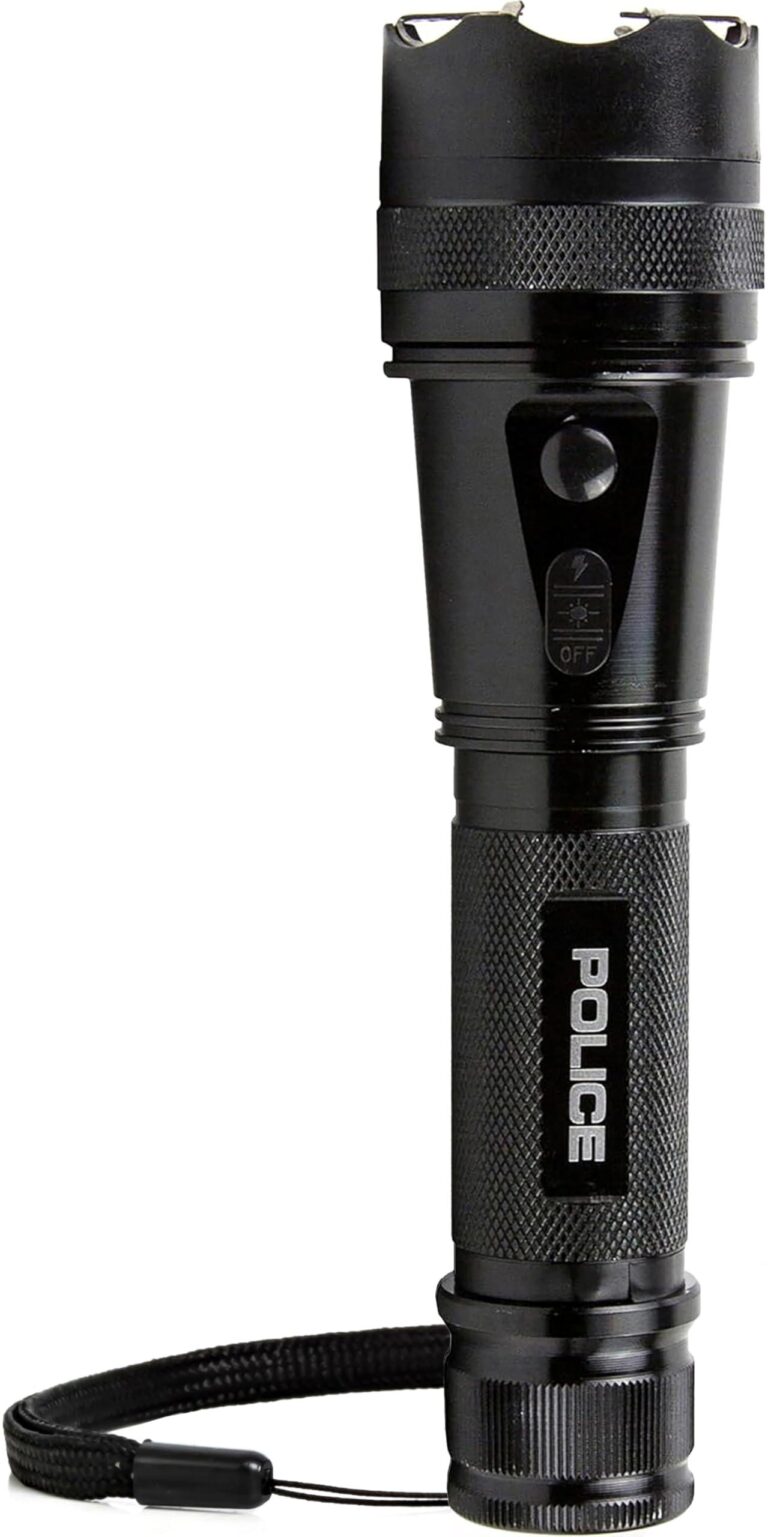Table of Contents
- Understanding Stun Gun Mechanics and Safety Protocols
- Legal Considerations and Use-of-Force Guidelines for Officers
- Best Practices for Effective De-escalation with Stun Guns
- Training Recommendations to Enhance Officer Confidence and Competence
- To Conclude
Understanding Stun Gun Mechanics and Safety Protocols
Stun guns operate by delivering a high-voltage, low-amperage electrical charge designed to temporarily disrupt muscle function and sensory perception. This mechanism effectively immobilizes a subject without causing permanent injury, making it a crucial tool for law enforcement personnel during confrontations. The device works through two primary components: the electrodes, which contact the target and conduct the electrical pulse, and the internal circuitry, which generates the voltage. Proper use ensures that the electrical discharge is focused and brief, minimizing risk while maximizing compliance.
Safety protocols are paramount when deploying stun guns to avoid accidental harm to both officers and suspects. Key practices include:
- Proper training: Officers must be trained to understand the device’s limitations and correct handling techniques.
- Target areas: Aim for large muscle groups such as the thighs or back, avoiding sensitive areas like the head and chest.
- Duration control: Limit discharge time to recommended intervals (typically 5 seconds) to prevent excessive electrical exposure.
- Post-use assessment: Evaluate the subject immediately after deployment for any adverse reactions or medical needs.
Adhering to these protocols not only preserves safety but also strengthens the legitimacy and accountability of stun gun use in the field.
Legal Considerations and Use-of-Force Guidelines for Officers
When deploying stun guns, officers must remain acutely aware of the legal framework governing their use. Compliance with local and federal laws is not optional but essential, as misuse can lead to severe legal consequences, including civil lawsuits and criminal charges. Always ensure that the application of force through a stun gun is reasonable, necessary, and proportional to the threat encountered. This means the device should only be used when lesser means of control have failed or when an immediate threat to officer or public safety exists. Documentation and reporting of each encounter involving a stun gun are equally crucial, serving as both legal protection and a tool for accountability.
Understanding departmental policies and use-of-force continuums is vital for every officer. These guidelines typically emphasize a stepwise escalation of force and specify scenarios where stun gun use is appropriate, such as subduing an actively resisting suspect or preventing a violent confrontation. Officers should also receive regular training on the physiological effects of stun guns and the potential risks involved, ensuring they make informed decisions in high-pressure situations. Key considerations include:
- Verifying the suspect’s behavior justifies stun gun deployment.
- Targeting proper areas of the body to minimize harm and maximize effectiveness.
- Being prepared for immediate medical assessment post-use.
Best Practices for Effective De-escalation with Stun Guns
Prioritizing communication and distance is essential when employing stun guns as a tactical option. Officers should always attempt verbal de-escalation first-using clear, calm commands to establish control while maintaining a safe distance. Positioning oneself so that there are minimal chances of unexpected close-range attacks helps reduce the need for physical intervention. When the circumstances escalate and a stun gun becomes necessary, presenting the device visibly and issuing a clear warning can often persuade suspects to comply without the need to discharge the weapon.
Understanding the device’s limitations and proper application further enhances effective use. Law enforcement should be trained to aim for recommended target areas, such as larger muscle groups, to maximize the current’s incapacitating effects while minimizing injury. The duration of the stun should be carefully controlled-short bursts typically suffice to gain compliance without causing unnecessary harm. Additionally, officers must remain observant of the subject’s condition post-application to provide immediate medical attention if required, ensuring both safety and professionalism throughout the encounter.
- Use verbal commands to attempt compliance first
- Maintain a safe and strategic distance
- Display the stun gun clearly as a deterrent
- Target large muscle groups for effective incapacitation
- Keep stun duration brief to avoid injury
- Monitor the subject’s physical state continuously
Training Recommendations to Enhance Officer Confidence and Competence
To build both confidence and competence among officers when using stun guns, it is essential to incorporate hands-on, scenario-based training that mimics real-life situations. This approach allows officers to practice decision-making under pressure, understand the device’s mechanics, and recognize appropriate deployment contexts. Trainers should emphasize the importance of ethical considerations and the legal parameters governing stun gun use, reinforcing that these tools are a means of de-escalation rather than immediate resort to force. Additionally, refresher courses held regularly help maintain skill retention and update officers on advancements in technology.
Furthermore, training programs should include the following core elements:
- Comprehensive device operation instruction: Familiarization with various stun gun models, maintenance, and safety protocols.
- Stress inoculation drills: Exposure to controlled high-stress environments designed to build resilience and quick reflexes.
- Legal and ethical frameworks: Clear guidance on use-of-force policies and liability concerns.
- Feedback and evaluation: Constructive critique sessions based on performance during practical exercises.
To Conclude
In conclusion, clearly understanding the proper use of stun guns is essential for law enforcement officers to ensure both their safety and that of the public. By mastering the key principles, legal guidelines, and effective deployment techniques outlined here, officers can confidently incorporate stun guns into their toolkit as a valuable, non-lethal option for de-escalation and control. Continued training and open communication remain critical to maintaining best practices and upholding the trust placed in law enforcement. Stay informed, stay prepared, and above all, prioritize safety.Check Our Other Blogs
- StunGun – Your Trusted Source for Stun Guns, Laws, and Self-Defense Tips
- PepperSprayLaws – Your Trusted Resource for Pepper Spray Information
- StunGunLaws – Your Trusted Guide to Stun Gun Legality and Safety





